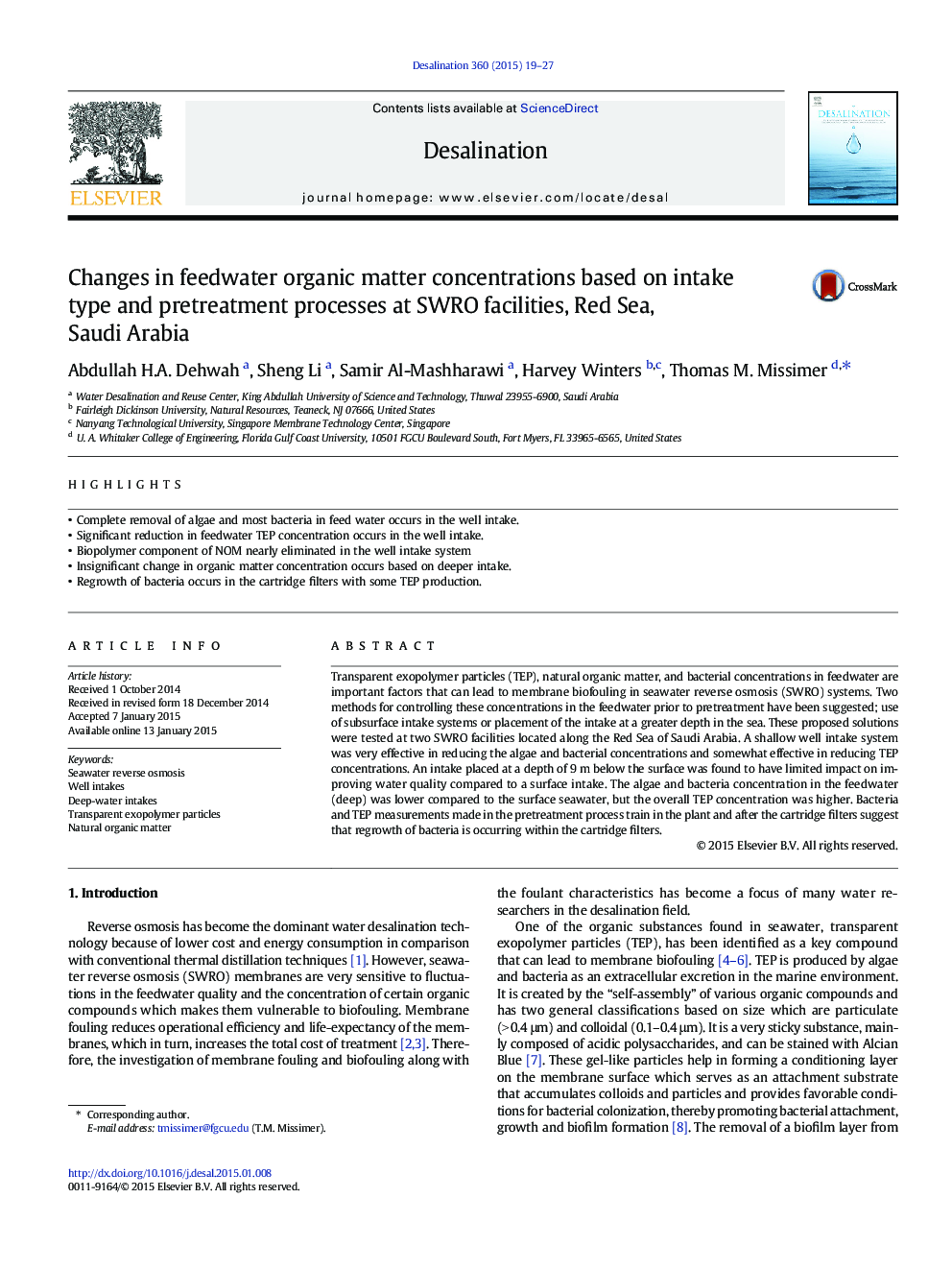| Article ID | Journal | Published Year | Pages | File Type |
|---|---|---|---|---|
| 623232 | Desalination | 2015 | 9 Pages |
•Complete removal of algae and most bacteria in feed water occurs in the well intake.•Significant reduction in feedwater TEP concentration occurs in the well intake.•Biopolymer component of NOM nearly eliminated in the well intake system•Insignificant change in organic matter concentration occurs based on deeper intake.•Regrowth of bacteria occurs in the cartridge filters with some TEP production.
Transparent exopolymer particles (TEP), natural organic matter, and bacterial concentrations in feedwater are important factors that can lead to membrane biofouling in seawater reverse osmosis (SWRO) systems. Two methods for controlling these concentrations in the feedwater prior to pretreatment have been suggested; use of subsurface intake systems or placement of the intake at a greater depth in the sea. These proposed solutions were tested at two SWRO facilities located along the Red Sea of Saudi Arabia. A shallow well intake system was very effective in reducing the algae and bacterial concentrations and somewhat effective in reducing TEP concentrations. An intake placed at a depth of 9 m below the surface was found to have limited impact on improving water quality compared to a surface intake. The algae and bacteria concentration in the feedwater (deep) was lower compared to the surface seawater, but the overall TEP concentration was higher. Bacteria and TEP measurements made in the pretreatment process train in the plant and after the cartridge filters suggest that regrowth of bacteria is occurring within the cartridge filters.
